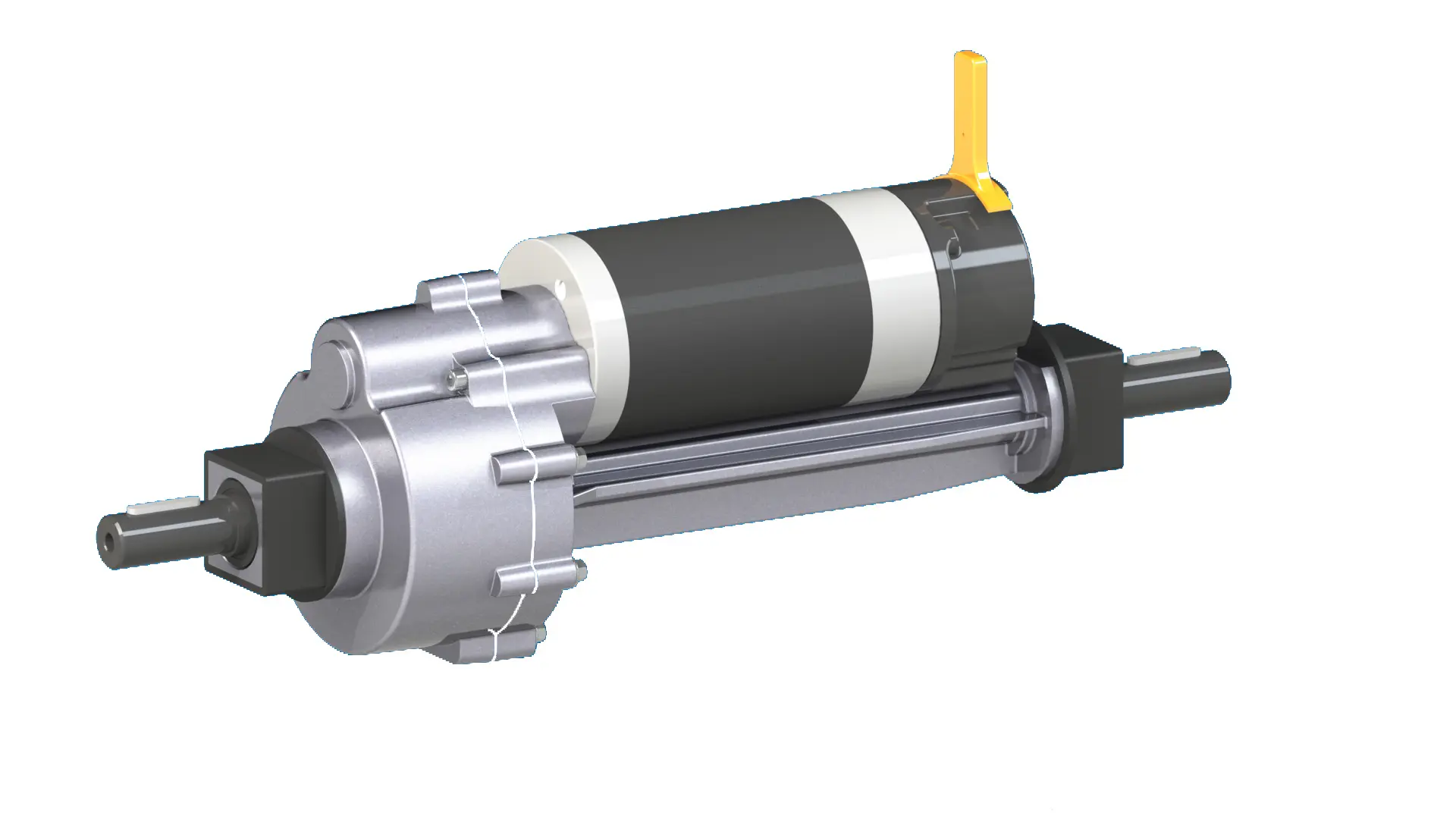The Advantages of Electric Transaxles Over Traditional Drivetrains
In the rapidly evolving world of automotive technology, the shift from traditional internal combustion engines (ICE) to electric powertrains has become a defining trend. Central to this transition is the electric transaxle, a compact and highly efficient unit that integrates the electric motor, transmission, and differential into a single assembly. This innovative component offers numerous advantages over traditional drivetrain systems, making it a cornerstone of modern electric vehicle (EV) design. In this blog post, we will explore the key benefits of electric transaxles and compare them to traditional drivetrains.
1. Enhanced Efficiency
1.1 Direct Energy Transfer
One of the most significant advantages of electric transaxles is their ability to transfer energy directly from the electric motor to the wheels. This direct connection minimizes energy loss, which is common in traditional mechanical systems with multiple components. Electric motors can convert over 90% of the energy from the battery into vehicle movement, far surpassing the efficiency of traditional internal combustion engines
1.2 Optimized Power Use
Electric transaxles are highly adept at managing power output based on driving conditions. They can adjust torque distribution in real-time, ensuring optimal power use and minimizing energy waste. This efficiency translates to improved battery life and extended vehicle range. For example, certain electric transaxle models have demonstrated efficiency improvements of up to 15%
1.3 Regenerative Braking
Another efficiency-enhancing feature of electric transaxles is regenerative braking. This technology captures energy that would otherwise be lost during deceleration and redirects it back to the vehicle’s battery. This not only improves overall energy utilization but also extends the vehicle’s range
2. Performance Advantages
2.1 Improved Acceleration
Electric transaxles facilitate faster and smoother acceleration. The instant torque delivery from electric motors provides EVs with quicker response times, often outperforming gasoline-powered vehicles in acceleration tests. This characteristic is particularly beneficial in urban driving scenarios, where quick bursts of speed and responsive maneuvering are essential
2.2 Better Handling and Stability
The integration of the motor and transmission into a single unit allows for better weight distribution in the vehicle. This improved balance enhances handling and stability, especially in adverse driving conditions. Additionally, electric transaxles can support advanced features like dynamic torque vectoring, further improving vehicle performance
3. Cost and Maintenance Benefits
3.1 Reduced Maintenance Needs
Electric transaxles have fewer moving parts compared to traditional mechanical systems. This reduction in complexity leads to decreased wear and tear, resulting in lower maintenance costs. For example, the absence of a traditional transmission can save owners an average of $200 annually in maintenance costs
3.2 Longer Lifespan
The simplified structure of electric transaxles contributes to a longer lifespan compared to their mechanical counterparts. With fewer parts to fail, the average lifespan of an electric transaxle can exceed 150,000 miles. This durability not only reduces long-term costs but also enhances vehicle reliability.
3.3 Lower Total Cost of Ownership
While the initial investment for an electric vehicle may be higher, the total cost of ownership tends to favor EVs over time. Lower fuel expenses and reduced maintenance requirements contribute to significant cost savings over the vehicle’s lifespan. For example, a study by the International Council on Clean Transportation found that the total cost of ownership for electric vehicles could be 20% lower than comparable gasoline vehicles over a five-year period
4. Environmental Impact
4.1 Lower Emissions
Electric transaxles play a crucial role in reducing the environmental impact of vehicles. By eliminating the need for fossil fuels, electric vehicles produce zero tailpipe emissions. This shift is particularly significant in urban areas, where air quality can be severely impacted by traditional combustion engines
4.2 Noise Reduction
Electric vehicles equipped with electric transaxles are significantly quieter than their ICE counterparts. Traditional vehicles produce around 80 decibels of sound at highway speeds, while electric vehicles emit far less noise. This reduction in noise pollution enhances the quality of life in populated areas and contributes to a more pleasant driving experience.
5. Design and Space Efficiency
5.1 Compact Design
Electric transaxles are more compact than traditional drivetrain systems. Their integration into a single unit frees up space, allowing for more efficient vehicle designs
This space-saving design is particularly beneficial for electric vehicles, where additiona
l space can be used for batteries or innovative interior layouts
5.2 Weight Savings
The reduction in size also leads to weight savings. A lighter vehicle demands less power to move, further enhancing the efficiency and performance of EVs. On average, electric transaxles are 30% lighter than their mechanical counterparts. This weight reduction not only improves range but also contributes to better handling and stability.
6. Future Developments and Innovations
6.1 Advancements in Autonomous Vehicles
Electric transaxles are essential components in the development of autonomous vehicles. Their precise control and efficiency are crucial for the performance and safety of self-driving systems. Companies like Waymo and Uber are already deploying fleets of autonomous vehicles equipped with advanced electric transaxles
6.2 Integration with Renewable Energy
As the world moves towards renewable energy sources, electric transaxles will play a pivotal role in reducing the carbon footprint of transportation. When charged with renewable energy, electric vehicles can achieve near-zero emissions
6.3 New Business Models
The shift to electric transaxles is also driving new business models and opportunities. Companies specializing in charging infrastructure, such as ChargePoint and Electrify America, are rapidly expanding, creating jobs and contributing to a more sustainable economic ecosystem
Conclusion
Electric transaxles represent a significant leap forward in automotive technology, offering numerous advantages over traditional drivetrains. Their enhanced efficiency, improved performance, reduced maintenance needs, and environmental benefits make them a compelling choice for modern vehicles. As technology continues to advance, electric transaxles will play an increasingly important role in shaping the future of transportation. With ongoing developments in autonomous vehicles, renewable energy integration, and innovative design, the potential for electric transaxles is vast and exciting
Post time: Jan-20-2025


